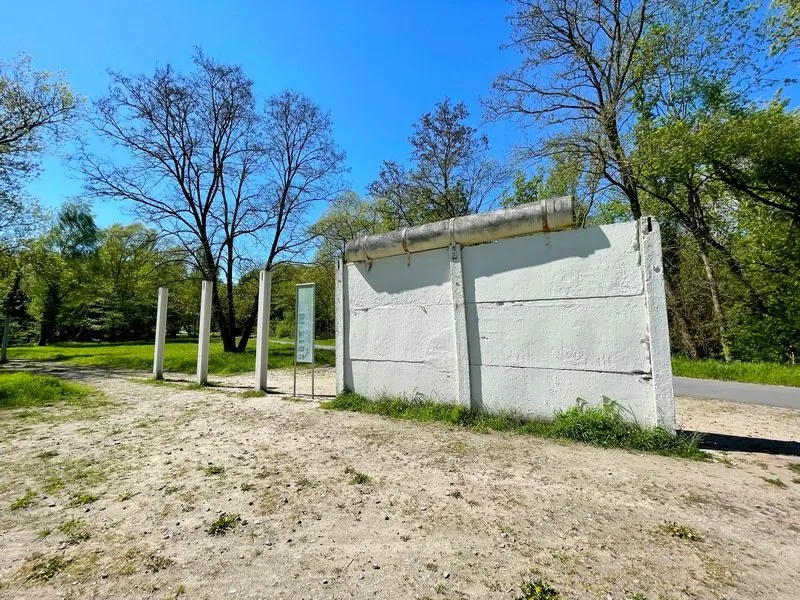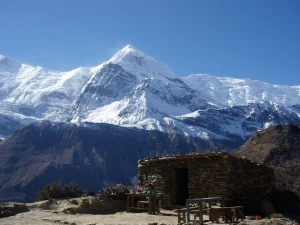How to Experience Berlin’s Historical Divide Through 5 Living Cold War Relics

When Germany was divided into two during the horrors of the Cold War, so was the city of Berlin.
At the end of World War II, the United States, France, and Great Britain shared occupation of West Germany and rebuilt the country with democratic capitalism. Meanwhile, the Soviet Union occupied East Germany and controlled it as a communist state.
The city of Berlin was located in East Germany. However, half of the city was actually part of the less oppressive and more affluent West Germany.
In 1952, the East German government closed the border, but the border between East and West Berlin remained open. This allowed many East Germans to escape to West Berlin. That was until the Berlin Wall was erected.
This article will explore five Cold War relics in Berlin that will help you experience and understand the depth of the historical divide.
The Berlin Wall Memorial
The Berlin Wall Memorial is an excellent, free opportunity to see just how daunting the divide was during the Cold War. The 96-mile-long and 13-feet-high concrete barrier was once heavily guarded and lined with over 300 watchtowers.
More than 100 people died while trying to cross the Berlin Wall throughout its 28-year history. Today, part of the memorial is made up of large photos of the victims and multimedia stations that tell the story of the wall.
The other part of the memorial is a restored section of the wall, which shows how wide it was. You can also climb the tower to see the “Death Strip” from above.
In addition to the memorial, you’ll stumble across pieces of the original wall all over the city if you take a free walking tour of Berlin. One section is more than a kilometer long and houses the East Side Gallery. This free, open-air art gallery is covered in graffiti that celebrates hope, peace, and change.
The most famous painting at the East Side Gallery is Dmitri Vrubel’s ‘My God, Please Help Me to Survive this Deadly Love’, which shows two communist leaders – Soviet leader Leonid Brezhnev and East Germany’s second dictator, Erich Honecker – kissing.
Checkpoint Charlie
Checkpoint Charlie is the remnants of the most infamous border crossing during the period when Berlin was divided into two. It’s where spies snuck from one side to the other, where East Germans escaped to the affluent West, and where tourists from West Berlin came to visit East Berlin.
The barrier, booth, flag, and sandbags you can see today are all based on the original checkpoint, making it a great photo opportunity. There are also yellow information boards nearby, which give you a great overview of the Cold War and key moments in Checkpoint Charlie’s history.
In addition, the Mauermuseum (the Wall Museum) tells the further story of the Berlin Wall and its many checkpoints. Adult tickets start at €18.50 (approximately $21.40).
Berlin Hohenschönhausen Memorial
The Berlin Hohenschönhausen Memorial tells the story of the former Stasi prison and the people who suffered there. The prison was a notoriously brutal facility, used by the Stasi (the Ministry for State Security) to punish thousands of inmates accused of being Nazi collaborators or spies.
You can explore some of the 400 exhibitions for free or join a guided tour led by former political prisoners and historians. Tours start at €9 (approximately $10.40) for adults.
The DDR Museum
The DDR Museum is located on former East German land. It focuses on what it was like to live in East Germany during the Cold War, with a collection of consumer goods, interactive exhibits, and recreated rooms from an East German apartment block.
The popular museum is open daily from 9am to 9pm, and adult tickets start at €13.50 (approximately $15.60).
Brandenburg Gate
Today, the Brandenburg Gate is Berlin’s most famous landmark and one of the most popular spots to stop for a photo.
However, the 18th-century monument was once a symbol of German division during the Cold War. After the construction of the Berlin Wall, the gate was located in a restricted area that could not be visited by East or West Germans.
In June 1987, US President Reagan made a speech in front of the Brandenburg Gate, where he called on the Soviet Union leader to “open this gate” and “tear down this wall”. Just over two years later, the Berlin Wall was knocked down, and the Brandenburg Gate soon became a symbol of German unity.
Fun fact: A section of the Berlin Wall is now displayed outside the Ronald Reagan Presidential Library in California.
Ready To Experience Berlin’s Historical Divide?
Berlin is an excellent city for learning more about the Cold War, whether you’re a history buff or just looking to understand what the locals went through. Remember to be respectful as you visit these Cold War relics, as well as any World War II sites and museums.
The German capital also has excellent dining, shopping, sports, and entertainment, so you won’t be short of things to do on your next trip across the pond.



